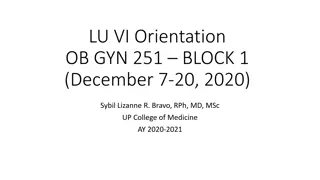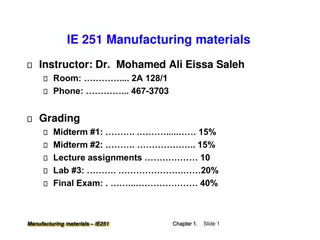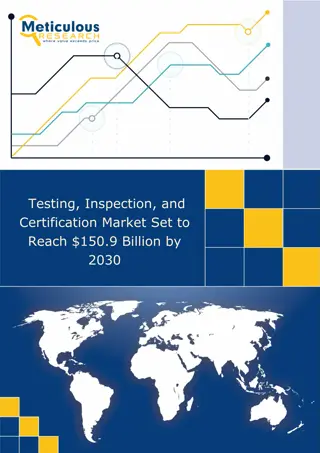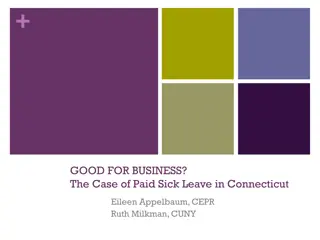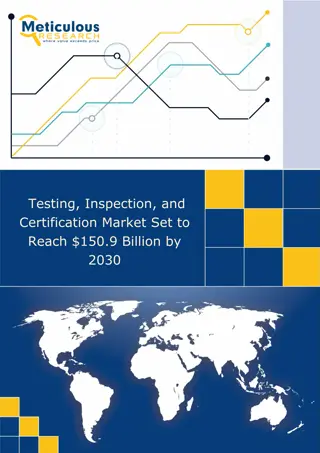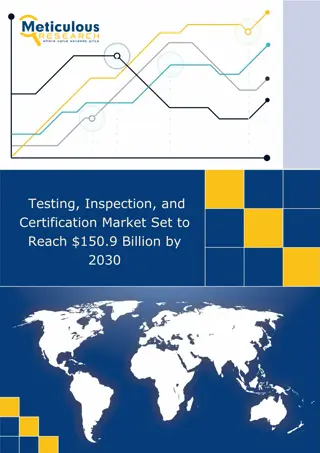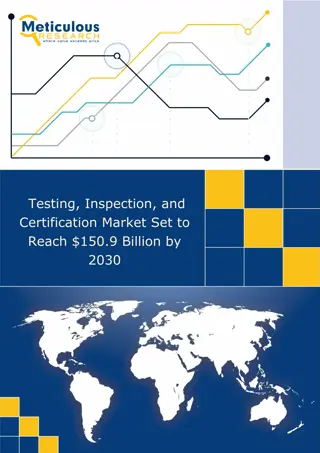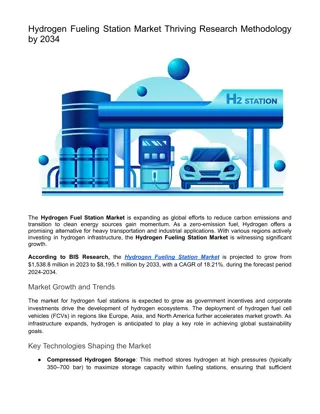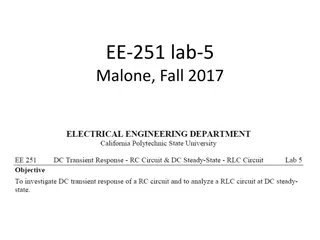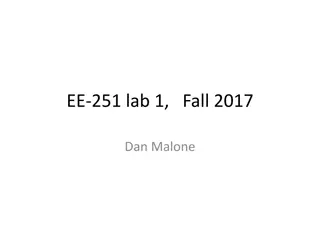
Understanding Demand, Supply, and Equilibrium in Economics
Learn about the fundamental concepts of demand, supply, and equilibrium in economics including market demand curve, factors affecting demand, and shifts in demand curves. Explore how changes in price, consumer income, population, and other factors impact the demand for goods and services.
Download Presentation

Please find below an Image/Link to download the presentation.
The content on the website is provided AS IS for your information and personal use only. It may not be sold, licensed, or shared on other websites without obtaining consent from the author. If you encounter any issues during the download, it is possible that the publisher has removed the file from their server.
You are allowed to download the files provided on this website for personal or commercial use, subject to the condition that they are used lawfully. All files are the property of their respective owners.
The content on the website is provided AS IS for your information and personal use only. It may not be sold, licensed, or shared on other websites without obtaining consent from the author.
E N D
Presentation Transcript
LECTURE 1 BASIC CONCEPTS: DEMAND, SUPPLY, AND EQUILIBRIUM
Market Demand Curve A market demand curve is defined as P the alternative quantities of a good Demand Curve that all consumers in a particular market are willing and able to buy as price varies, Qd holding all other factors constant.
Change in Quantity Demanded (Movement Along a Demand Curve) d= f P holding cons ( tan ) Q t other factors P A movement along a demand curve occurs when own price changes, holding constant other factors. Demand Curve What are the other factors that we are holding constant? Qd
Other Factors Affecting Demand The factors holding constant are: the prices of other goods including substitutes and complements (PO), aggregate consumer money income (M), consumer population (POP), and noneconomic factors including social, physiological, psychological, and demographic factors unique to the consumers in the market (SPPD). d= f P PO M POP SPPD ( , , , ) Q
Change in Demand (Shift in the Position of the Demand Curve) It is important to distinguish between: a movement along a demand curve (change in quantity demanded) and a shift in the position of the demand curve (change in demand). A movement along a demand curve occurs when own price changes, holding constant PO, M, POP, and SPPD. A shift in the demand curve occurs when we change one of those factors being held constant.
Shift in Demand: Population (POP) With an increase in POP, the demand curve shifts to the right. P With the demand curve shifting to the right, the quantity demanded increases for all prices. $3 Qd Factors that lead consumers to change demand quantities at the same price are referred to as demand shifters. 30 20
Demand Shifter: Noneconomic Factor (SPPD) Consider the consumption trend of moving away from foods that are perceived to be high in fat and cholesterol content. P This can be thought of as a change in one component of the SPPD. $3 Qd As a result of this change in the dietary habit of consumers, the demand for red meat has shifted to the left. 30 20
Demand Shifter: Price of Other Good (PO) How about an increase in one of the prices of other goods? Well, it depends! With an increase in the price of a substitute, the demand curve shifts to the right. Pbeef As the price of pork increases, consumers demand more beef even though the price of beef does not change. $3 This is because beef is now relatively more inexpensive compared to pork. Qbeef 30 20
On the other hand, with an increase in the price of a complement, the demand curve shifts to the left. As the price of bread increases, the demand for bread decreases. Pbutter Hence the demand for butter decreases even though the price of butter stays the same. $3 This is because butter is, in general, complementary to bread. Qbutter 30 20
Demand Shifter: Money Income (M) How about an increase in income? Again, it depends! In most cases, an increase in income shifts the demand curve to the right. P This is consistent with the idea that as income increases people buy more of the products. $3 In this case, the good is called a normal good. Qd 30 20
A few commodities such as dry beans and potato are called inferior goods. As income increases consumers tend to buy less of the inferior goods as they can now afford more expensive normal goods. P That is, an increase in income shifts the demand curve for an inferior good to the left. $3 Qd 30 20
Slope of a Demand Curve P rise run Demand Curve slope P Qd From the definition, the slope of a demand curve is the change in price divided by change in quantity demanded: Qd slope of demand curve P Qd = < or = 0
P Measuring Responsiveness Demand Curve It is often useful to have a measure of how "responsive" demand is to some change in own price. P Qd Qd Q P d = : Re That is sponsive Now the first idea that springs to mind is to use the inverse of the slope of a demand curve as a measure of responsiveness. slope of demand curve After all, the definition of the slope of a demand curve is the change in price divided by change in quantity demanded: P Qd =
slope of demand curve P P Qd Demand Curve = P So, the inverse of the slope of a demand curve looks like a measure of responsiveness. Qd Qd Well, it is a measure of responsiveness - but it has problems. In particular, the slope of a demand curve depends on the units in which we measure price and quantity. For example, if we measure demand in gallons rather than in quarts, the slope becomes four times bigger, and hence, 1/slope becomes four times smaller. It is convenient to consider a unit-free measure of responsiveness. Economists have chosen to use a measure known as elasticity.
The Own-Price Elasticity of Demand d, Q P The own-price elasticity of demand, , is defined as the percent change in quantity demanded divided by the percent change in own price. A 10 percent increase in price is the same percentage increase whether the price is measured in American dollars or English pounds. Thus, measuring increases in percentage terms keeps the definition of elasticity unit-free. Q 5% d 0.5% 1% % % in Q in P Q Q P P d d d = = P Q d 10% P
A convenient way to think of an own-price elasticity of demand is as the percentage change in quantity demanded corresponding to a one percentage change in own price, holding other factors constant. % % in Q in p d = % in Q associated with 1% in P d 30% 5% in Q in p d = 6% in Q associated with 1% in P d
Own-Price Elastic VS. Inelastic = - 0.5 = 05 . A 1% increase in the price of the good will cause a 0.5% reduction in the demand quantity. Good 1 = - 1.5 = 15 . A 1% increase in the price of the good will cause a 1.5% reduction in the demand quantity. Good 2 Which of the two goods is more own-price elastic? Good 2 is more own-price elastic. The absolute value of its own price elasticity is larger than that pertains to good 1.
Own-Price Elastic VS. Inelastic = - 0.5 = 05 . A 1% increase in the price of the good will cause a 0.5% reduction in the demand quantity. This good is own-price inelastic. = - 1.5 = 15 . A 1% increase in the price of the good will cause a 1.5% reduction in the demand quantity. This good is own-price elastic. = - 1.0 = 10 . A 1% increase in the price of the good will cause a 1% reduction in the demand quantity. The elasticity is unitary.
Q d Q Computing Own-Price Elasticity d P P Q d Q Q P P d d = = * P Q d P 1 1 P slope = * 0 Slope of the demand curve Q d The own-price elasticity of demand can be expressed as the product of the inverse of the slope of the demand curve and the ratio of own price to quantity.
Q P 1 P P d = = * * Q Slope of the demand curve Q d d Notice that the flatter the demand curve, the larger in absolute value is (that is, the more price elastic is the demand). The flatter the demand curve, the smaller in absolute value is the slope, (e.g., - 2, instead of - 4). Qd P , Hence, the flatter the demand curve, the larger in absolute value is the inverse of the slope, (e.g., - 0.5, instead of - 0.25). Q P d, Hence
The flatter the demand curve, the more price elastic is the demand. P P steeper flatter Qd Qd Hence, the flatter the demand curve, the more responsive is the quantity to a price change. The flatter the demand curve, the more room there is for the quantity to adjustment.
Q P 1 P P d = = * * Q Slope of the demand curve Q d d elasticity = - infinity P P elasticity = - 0 slope = - 0 slope = - infinity Perfectly Elastic Perfectly Inelastic Qd Qd The flatter the demand curve, the more price elastic is the demand.
Q P 1 P P d = = * * Q Slope of the demand curve Q d d Own price elasticity is defined for a point on the demand curve and, in general, the elasticity coefficient varies along the demand curve. P For example, consider a linear demand curve: Qd Along the curve, the slope stays the same, but P and Qd change as we move along the demand curve. Hence, the elasticity coefficient changes as we move along the demand curve.
Evaluating Price Elasticity at a Sample Point Since the elasticity coefficient varies along a demand curve, It is not technically correct to say that the demand for a commodity is own-price elastic or inelastic. That is, demand is price elastic or inelastic only within some range of the data. In making empirical computations, a common procedure is to evaluate the price elasticity of demand at the mean of the data. Q P P Q P and Qd where are the price and quantity evaluated at the mean of the data. d = * d
In-Class Exercise 1-a Consider the following demand equation for beef products: Q beef = + 001 05 003 . . . P P beef pork + + + 001 . 004 . 001 . P M SPPD chicken The sample means of the variables are: Q beef = = 5 , P P pork chicken = 2 , 3 , P beef = = = 4 , 20 , 250 M SPPD Write down the formula for own price elasticity of demand for beef. Compute the own price elasticity of demand for beef (evaluating at the sample means). Is the demand own price elastic or inelastic? Suppose the price of beef is projected to decrease by 2% next month, what would be the percentage change in Qbeef (demand)?
Factors Determining Supply What are the factors determining supply quantity? It depends on the output price (P). It depends on the input prices (PI). It depends on the price of alternative output (PO). This is the opportunity costs of not producing other commodities. It also depends on such noneconomic factors as capacity, technology, and weather that firms face (CAP). Q f P PI PO CAP ( , s= , , )
Supply Curve A supply curve is the relationship between quantity supplied for a good (Qs) and its price (P), holding constant other factors. The factors which we are holding constant include: input prices (PI), prices of alternative outputs (PO), and noneconomic factors (CAP). Supply Shifters s= f P PI PO CAP ( , , ) Q
Change in Quantity Supplied (Movement Along a Supply Curve) P Supply Curve Notice that the supply curve has a positive slope. P" P P' slope of supply curve Qs P Qs Qs = 0 Qs' Qs" That is, as price increases, the quantity supplied moves up along the supply curve. s= f P PI PO CAP ( , , ) Q
Change in Supply (Shift in the Position of the Supply Curve) It is important to distinguish between: a movement along a supply curve (change in quantity supplied) and a shift in the position of the supply curve (change in supply). A movement along a supply curve occurs when output price changes, holding constant PI, PO, and CAP. A shift in the supply curve occurs when we change one of those factors being held constant.
Shift in Supply: Input Prices (PI) With a decrease in input prices, the supply curve shifts to the right. P With the supply curve shifting to the right, the quantity supplied increases for all levels of output price. $3 Qs Factors that lead producers to change supply quantities at the same price are referred to as supply shifters. 20 30
Shift in Supply: Alternative Output Prices (PO) P With a decrease in alternative output prices, the supply curve for the commodity in question shifts to the right. For example, a decrease in sorghum price means that the land and labor used in sorghum production will now be less profitable than if used in wheat production. $3 Qs 20 30 Hence, a decrease in sorghum price shifts the supply curve of wheat to the right.
Shift in Supply: Technology (CAP) P An improvement in technology is defined as something that enables firms to produce more output with the same quantity of inputs as previously. $3 Qs 20 30 Thus, with improved technology, the supply curve shifts to the right.
The Own Price Elasticity of SupplyQ p s, Q p The price elasticity of supply, , is defined to be the percent change in quantity supplied divided by the percent change in the output price. s, % % in Q in P Q P P Q s s Q = slope of supply curve Qs , P s P s = 0 P Qs 1 P Q = P slope of supply curve s Supply Curve 0 Qs
% % in Q in P Q P P Q s s Q = , P s s 1 P Q = slope of supply curve s A convenient way to think of a price elasticity of supply is as the percentage change in quantity supplied corresponding to a one percentage change in output price, holding other factors constant.
Q P 1 P Q P Q s Q = , P slope of supply curve s s s Q p Notice that the flatter the supply curve, the larger is (that is, the more price elastic is the supply). s, P Qs The flatter the supply curve, the smaller is the slope, (e.g., 2, instead of 4). , Hence, the flatter the supply curve, the larger is the inverse of the slope, (e.g., 0.5, instead of 0.25). P Q s, Hence
The flatter the supply curve, the more price elastic is the supply. P P steeper flatter Qs Qs Hence, the flatter the supply curve, the more responsive is the quantity to a price change. The flatter the supply curve, the more room there is for the quantity to adjustment.
Q P 1 P Q P Q s Q = , P slope of supply curve s s s elasticity = infinity P P elasticity = 0 slope = 0 slope = infinity Perfectly Elastic Perfectly Inelastic Qd Qd The flatter the supply curve, the more price elastic is the supply.
Own Price Elastic VS. Inelastic = 0.5 A 1% increase in the output price will cause a 0.5% increase in the supply quantity. The supply is own price inelastic. = 1.5 A 1% increase in the output price will cause a 1.5% increase in the supply quantity. The supply is own price elastic.
In-Class Exercise 1-b Consider the following supply equation for beef products: Q beef = + 1231 02 008 . . . P beef + 0007 . 0005 . 002 . P P P CAP pork beans corn The sample means of the variables are: Q beef = = = 5 P P pork beans = 2 , 3 , P beef = = , 3 , 2 , 250 P CAP corn Write down the formula for own price elasticity of supply of beef. Compute the own price elasticity of supply of beef (evaluating at the sample means). Is the supply own price elastic or inelastic? Suppose the price of beef is projected to decrease by 2% next month, what would be the percentage change in Qbeef (supply)?
Price Determination Now, we examine how the equilibrium price is determined. P Equilibrium implies "equal," "balanced," and "stable." Supply P* The concept of equilibrium price is simply the price at which quantity demanded equals quantity supplied. Demand Qd, Qs Q* Thus, the intersection point of the demand and supply curves indicates the equilibrium price.
P Supply Disequilibrium excess supply P' P* In a perfectly competitive market, prices other than the equilibrium price cannot be sustained. Or May be we can export the excess supplies to a foreign market! Demand Qd, Qs Q* Some or all producers will begin to offer their products at a lower price. At prices above the equilibrium price, we have a situation called excess supply. The lower price discourages some supply and encourages additional demand. This is because the quantity that consumers are willing to buy is less than the quantity producers are willing to sell. The process continues until price is driven down to P*, at which point Qd = Qs.
P Supply Disequilibrium P* On the other hand, at prices below the equilibrium price, we have a situation called excess demand. Or May be we can satisfy the excess demand through imports from a foreign market! P' Demand excess demand Qd, Qs Q* The higher price discourages some demand and encourages additional supply. This is because the quantity that consumers are willing to buy is more than the quantity producers are willing to sell. The process continues until price is driven driven to P*, at which point Qd = Qs. In this case, consumers will begin bidding up the price. Accordingly, only the equilibrium price can be sustained.
In-Class Exercise 1-c (i) Consider the following demand equation for beef products: = + 001 05 003 . . . + + + d Qbeef 001 . 004 . 001 . beef P P chicken P M SPPD pork Consider the following supply equation for beef products: = + 1231 02 008 . . . P beef + s Qbeef 0007 . 0005 . 002 . P P P CAP pork beans corn Forecasts are obtained for the demand and supply shifters: + 0.03 (5) + 0.01 (4) + 0.04 (20) + 0.01 (250) = + 3.49 - 0.08 (5) - 0.007 (3) - 0.005 (2) + 0.02 (30) = + 0.169 effect of demand shifters effect of supply shifters
In-Class Exercise 1-c (ii) Consider the following demand equation for beef products: = + 001 05 003 . . . + 3.49 + + + d Qbeef 001 . 004 . 001 . beef P P chicken P M SPPD pork Consider the following supply equation for beef products: = + 1231 02 008 . . . P beef + 0.169 + s Qbeef 0007 . 0005 . 002 . P P P CAP pork beans corn The demand equation can be written as: = 350 05 . . What would happen to the demand equation if there is an increase in consumer income? d Qbeef beef P The supply equation can be written as: = + 140 02 . . Pbeef s Qbeef
In-Class Exercise 1-c (iii) The demand equation is: = 350 05 . The supply equation is: = 140 02 . d Qbeef . beef P + s Qbeef . Pbeef P Supply P* Demand Qd, Qs Q* Graphically solve for the equilibrium price and quantity. Algebraically solve for the equilibrium price and quantity.
Work Space for In-Class Exercise 1-c (i) The demand equation is: = 350 05 . The supply equation is: = 140 02 . d + s Qbeef . beef P Qbeef . Pbeef The equilibrium condition is: = d s Q Q beef beef 3.50 - 0.5 Pbeef = 1.40 + 0.2 Pbeef Pbeef = 3 Qdbeef = 3.5 - 0.5 (3) = 2 Qsbeef = 1.4 + 0.2 (3) = 2
Work Space for In-Class Exercise 1-c (ii) The demand equation is: = 350 05 . d Qbeef . beef P If Pbeef = 0, then Qdbeef = 3.5 (P,Q) = (0, 3.5) (P,Q) = (7, 0) If Qdbeef = 0, then Pbeef = 7 The supply equation is: = 140 02 . + s Qbeef . Pbeef If Pbeef = 0, then Qsbeef = 1.4 (P,Q) = (0, 1.4) (P,Q) = (-7, 0) If Qsbeef = 0, then Pbeef = -7


